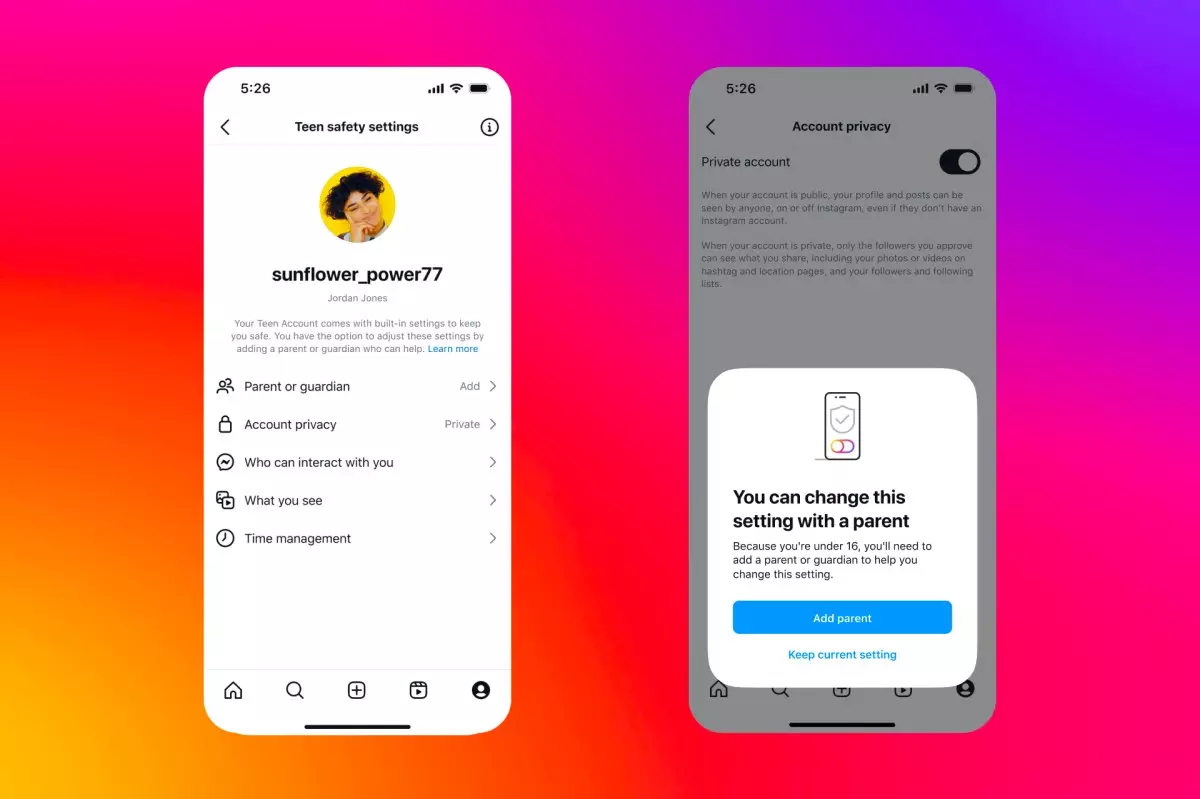Instagram has recently made a significant move in the interest of safety and digital responsibility by expanding its Teen Accounts feature to India, one of its largest markets. With over 350 million users, it has become imperative for platforms like Instagram to prioritize the protection of their younger audience. This expansion follows the introduction of similar protective measures in Western countries such as the U.S., U.K., Canada, and Australia, where the platform had earlier streamlined teen user experiences to better safeguard their online interactions.
The new Teen Accounts are structured to serve users under the age of 16, with privacy as a fundamental characteristic. The accounts will automatically be set to private, ensuring that any shared content is visible only to approved followers. In addition to privacy settings, Instagram has embedded several limitations and controls designed to enhance users’ safety. These include messaging restrictions to prevent unsolicited communications from unknown parties, interaction limits to foster healthy engagement, and enforced time limit reminders alongside a sleep mode feature to encourage responsible usage patterns.
Notably, Instagram has instituted a parental control mechanism for older teen users, aged 16 and above, enabling parents or guardians to supervise their children’s interactions on the platform. This proactive measure ensures that while teens explore social media, their families remain involved in the digital experiences, potentially helping to mitigate the risks associated with online engagement.
One of the stand-out features of the Teen Accounts is the increased engagement of parents in their children’s online activities. Parents now have the ability to oversee their teens’ followers and can also monitor interactions without accessing specific messages. This strategic balance aims to protect teens while granting them a sense of freedom to explore social networking. The ability to set daily usage limits offers another layer of reassurance to parents, helping them to prevent excessive screen time and encouraging a more balanced lifestyle.
The careful attention given to parental involvement reflects a growing acknowledgment within digital platforms of the need for guardians to play an active role in their children’s online journeys. As Natasha Jog, Director of Public Policy India at Instagram, stated in a recent blog post, the initiative is a key component of Meta’s commitment to fostering a safer, more responsible digital space.
A Comprehensive Approach to Content Control
Diving deeper into the content management aspect, Instagram has implemented several features aimed specifically at refining the type of content that is accessible to teen users. Firstly, through stringent filtering of offensive language and phrases, the platform ensures that interactions remain positive and harassment-free. Moreover, the curated experience extends to the Explore page and Reels content, where themes such as violence or beauty product advertisements are actively removed. By steering content in safer directions, Instagram seeks to create an environment that promotes creativity and healthy social engagement rather than exposure to potentially harmful subjects.
The customization options allow teens to engage with content that aligns with their interests, such as sports and arts, which can be crucial in enriching their online experience. This not only enhances user satisfaction but also fosters a community that celebrates diversity in interests, moving away from generic content that may not resonate with every user.
Challenges and Future Implications
Despite the well-intentioned nature of these updates, the challenges surrounding age verification present a complex hurdle. With many young users likely to misrepresent their age, Instagram is investing in various verification methods, including ID checks and video selfies. These strategies are essential, especially in light of India’s draft data protection regulations, which aim to tighten control over how personal information is handled, particularly concerning users under 18.
The ongoing dialogue regarding data protection, along with evolving legal requirements, signifies a proactive shift within social media companies towards adopting comprehensive policies to shield young users. As regulations mature, it’s likely that platforms will continue adjusting their approaches to user safety, data management, and parental engagement.
Instagram’s expansion of teen accounts to India marks a pivotal moment in the realm of online safety for younger users. By embedding stringent protective measures and enhancing parental oversight, Instagram strives to create a more secure environment, echoing a broader commitment to establishing responsibility within the digital landscape.

